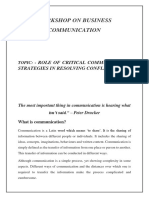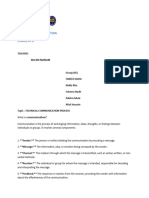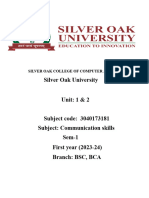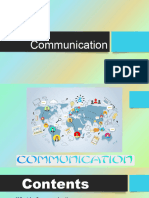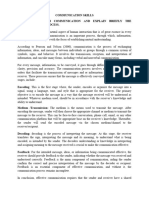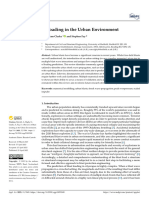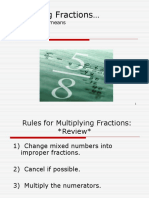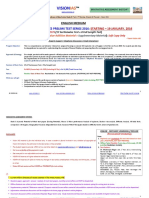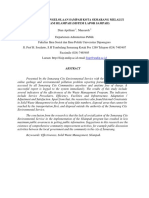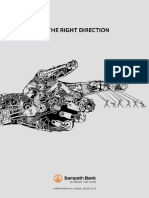Communication
What is Communication?
Communication is the process of two or more people or groups exchanging information,
ideas, thoughts, and feelings. It is a basic human activity that enables individuals to
communicate with one another and exchange ideas, feelings, and experiences. There is a
sender, a message, and a receiver in the communication process.
The sender is the individual or organisation that starts the conversation by encrypting a
message and transmitting it to the recipient. The information or concept being communicated
is known as the message, which can be done either verbally or by nonverbal clues. Nonverbal
cues include facial expressions, body language, and tone of voice, while verbal clues include
spoken language.
The individual or group that gets the message, decodes it and interprets its meaning is the
receiver. In order to confirm that the communication has been received and understood, the
recipient may also give feedback to the sender. Feedback can come in the form of questions,
remarks, or other cues and can be verbal or nonverbal.
�**The Essential Steps of the Communication
Process **
Fig- 1
�Fig- 2
https://online.pointpark.edu/public-relations-and-advertising/communication-process/
Types of Communication
Here are the types of communication:
Verbal Communication
Words, whether spoken or written, are used in this sort of communication to communicate a
message. It falls into two categories: written and oral. Face-to-face interactions, phone calls,
and presentations all fall under the category of oral communication. Emails, letters, and text
messages are all examples of written communication.
Nonverbal Communication
Body language, facial emotions, and other nonverbal indicators are used in this style of
communication to communicate a message. Examples include body language, posture, and
vocal tone. Even more so than verbal communication, nonverbal communication has the
potential to be strong and successfully convey a message.
Communication Across Cultures
People from many cultural backgrounds exchange information and ideas through this style of
communication. It can involve both verbal and nonverbal communication, and because of the
varied languages, traditions, and values of other cultures, it can be difficult. In order to foster
mutual understanding and cooperation between many cultures, intercultural communication is
crucial.
� Visual Communication
To transmit a message, this style of communication makes use of visual components including
pictures, videos, and graphics. There are several ways to employ visual communication,
including in charts, info-graphics, and advertising. It is frequently employed to simplify and
enliven difficult information.
Interpersonal Communication
Information and ideas are exchanged between two or more persons during this style of
conversation. It can take the shape of written messages, phone calls, or face-to-face
interactions and can be formal or informal. Building and maintaining partnerships depend on
interpersonal communication.
Mass Communications
In order to reach a big audience, this style of communication uses mass media, including
television, radio, newspapers, and the internet. Information that needs to be widely
disseminated is frequently done so through mass communication, such as news updates, ads,
and PSAs.
Electronic communication
Digital technology, including the internet, social media, and mobile devices, are used in this
sort of communication to spread a message. In recent years, digital communication has
proliferated more widely, changing the way individuals communicate and exchange
information.
�Barriers to Communication
Here is a list of some of the barriers to Effective Communication:
Physical Barriers
Any form of restriction or obstacle that restricts or impedes good communication is referred to
as a physical barrier. These could include intrusive sounds, dim illumination, or a lack of
personal space. For instance, it will be challenging for two people to hear and comprehend
each other if they are trying to hold a conversation in a noisy, busy environment.
Language Barriers
When persons speak various languages or have varying degrees of fluency in a language,
linguistic barriers may develop. This may make it challenging for individuals to communicate
effectively and may result in misunderstandings. A non-native speaker could find it
challenging to comprehend a person who exclusively speaks English, for instance, if they try
to talk.
Cultural Barriers
People from diverse cultural backgrounds and perspectives can encounter cultural obstacles.
These may consist of various traditions, convictions, and ideals. For instance, cultural
differences may make it difficult for two people from different cultures to understand one
another when they are trying to communicate.
� Emotional Barriers
When people are worried or feeling emotionally raw, emotional barriers might develop. As a
result, individuals could find it challenging to communicate clearly because they might be
focused on their own feelings. A person could find it difficult to speak calmly and rationally
with others if they are angry or disturbed, for instance.
Cognitive Barriers
When individuals have varying degrees of comprehension or understanding, cognitive barriers
may develop. Things like a lack of information or attention are examples of this. For instance,
if a person is trying to interact with someone who has a cognitive impairment, the cognitive
barriers may make it difficult for them to comprehend one another.
Perceptual Barriers
People with various perspectives or perceptions may encounter perceptual hurdles. This can
involve things like a loss of focus or comprehension. For instance, perceptual obstacles may
make it difficult for two people to comprehend one another if they are trying to speak with
someone who has a perceptual impairment.
Technological Barriers
Technological obstacles can arise when people have varying degrees of access to or expertise
with technology. This can include problems like not having access to the internet or not
knowing how to use specific technology. For instance, if a person is trying to interact with
someone who is unfamiliar with a certain technology, they could find it challenging to
comprehend one another because of the obstacles posed by technology.
Noise Barriers
Noise barriers to communication refer to any external or internal factors that can interfere
with or disrupt the flow of information between people. These barriers can be physical,
psychological, or cultural in nature, and can impede effective communication, leading to
misunderstandings, confusion, and frustration.
� Effective Communication
The practice of clearly and meaningfully conveying information and ideas between two or
more people or groups is known as effective communication. It includes a number of crucial
components, such as:
Active listening: This refers to giving verbal or nonverbal indicators that show you are
interested and paying attention, as well as actively listening to the speaker and
comprehending their message.
Clarity and conciseness: Using simple language and being direct and to the point are
essential components of effective communication. This makes it easier to communicate
clearly and ensures that the message is understood as intended.
Empathy and understanding: Understanding the viewpoint of the person you are
interacting with, demonstrating empathy, and being conscious of their needs and feelings
are other components of effective communication. This fosters trust and fosters an
environment that is conducive to effective communication.
� Feedback and response: Giving comments on the message heard and reacting in a way
that is appropriate and respectful are further components of effective communication. This
makes it easier to make sure the message is understood and that any misconceptions are
promptly resolved.
***An Effective Communication Process :
• Use standard terminology when communicating information.
• Request and provide clarification when needed.
• Ensure statements are direct and unambiguous.
• Inform the appropriate individuals when the mission or plans change.
• Communicate all information needed by those individuals or teams external to the team.
• Use nonverbal communication appropriately.
• Use proper order when communicating information.
_____________________________________________________________________________________________
____
Flow of communication
https://www.krayonnz.com/user/doubts/detail/622c2de5e33916005ba82aa7/what-is-flow-of-
communication
https://www.geektonight.com/flow-of-communication/










